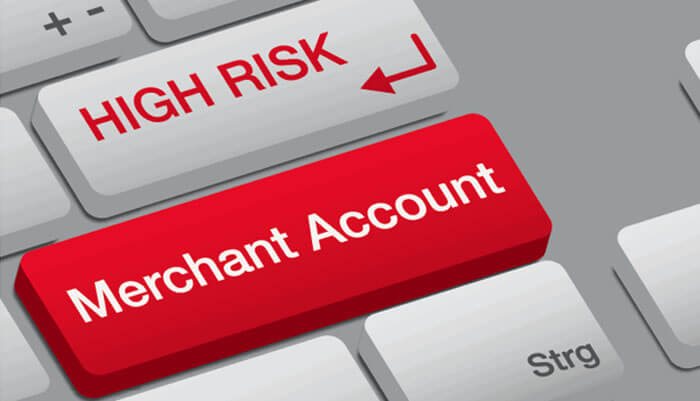High Risk Merchant Account – What It Is And How It Works
Are you in the market for a high-risk merchant account or considering making the switch from a regular or low-risk one? Understanding the difference between them and their associated risks is key to selecting the right payment processing solution for your business.
A high-risk merchant account is a special type of payment processor created for businesses with a higher risk of chargebacks and fraud. Merchant account providers like banks and third-party payment processing companies typically set higher fees and stricter limits for high-risk businesses as a way to protect themselves in case of an increase in fraudulent transactions or chargebacks.
What is the definition of a high-risk merchant?
A merchant is typically deemed to be “high-risk” when the risk of chargebacks and fraud levels are considered to be higher than average. A chargeback is simply when a customer disputes a payment and asks their card-issuing bank to reverse the transaction. The risk of a merchant having chargebacks is contingent upon the type of products and services they sell as well as the industries they operate in.Businesses and industries that may be considered high-risk by merchant account providers include those selling unregulated products (e.g. guns and drugs), those with a high volume of transactions and/or a high chargeback rate, and those operating in certain global markets.
What types of businesses are considered high risk?
When it comes to the definition of a high-risk merchant, there is no single answer that fits all businesses and industries. Generally, high-risk merchants tend to be those who operate in certain industries and countries, and/or those who sell or facilitate high-value items and services. These merchants include adult websites, cannabis dispensaries, hard-to-track services (like travel, consulting, and software-as-a-service), gaming websites, cryptocurrency traders and exchangers, luxury travel agents, gun and firearms merchants, debt collection agencies, ecommerce stores, international merchants and online pharmacies.
High-Risk Merchant Account vs. Low-Risk Merchant Account
The difference between a high-risk merchant account and a low-risk one lies in their respective charges and limits set by their service providers. Low-risk accounts are typically very easy to obtain, with minimal up-front costs and no long-term contracts. They do, however, have slightly lower transaction limits, higher chargeback fees and may become blocked or suspended for certain activity. Low-risk merchant accounts are best suited for businesses with low transaction volumes or large up-front investments.
In contrast, high-risk merchant accounts require more effort to set up and incur higher fees than their low-risk counterparts. That said, they have the benefit of more generous transaction limits and increased protection against fraud. High-risk merchant accounts are generally better suited to businesses that process large volumes of transactions and/or operate in industries labeled as “high-risk”.
How Do I Get a High-Risk Merchant Account?
Getting a high-risk merchant account can be a daunting task. After all, merchant account providers undertake rigorous processes to assess the risk of each merchant and determine their eligibility for an account.The usual criteria for high-risk merchant accounts include:-
- A good and/or improving payment processing history – Providers are likely to be more open to approving accounts for businesses that can demonstrate that they can process payments responsibly with minimal risk of fraud or chargebacks.
- Strong security measures – You must show that your business has the necessary data security measures in place to protect customers; sensitive information from malicious use.
- Tailored chargeback prevention processes – You must be able to communicate what processes your business has put in place to prevent chargebacks from happening in the first place.
- A good reputation in the industry – Many providers will review what other merchants are saying about your business during their assessment.
This means you should strive to maintain a good reputation with customers, vendors, and industry observers.Once you have fulfilled these criteria and provided the necessary documents, you can apply for a high-risk merchant account with a reputable provider. To increase your chances of approval, consider working with a specialist in the field, who can make the process smoother and more efficient.
In conclusion, understanding the differences between high-risk and low-risk merchant accounts can help you determine which will best suit your business. Keep in mind that high-risk merchant accounts come with higher fees and stricter limits but offer increased protection from fraud and chargebacks. If you fulfill the criteria and apply for an account with a reputable provider, you should be able to set up a high-risk merchant account without too much difficulty.











